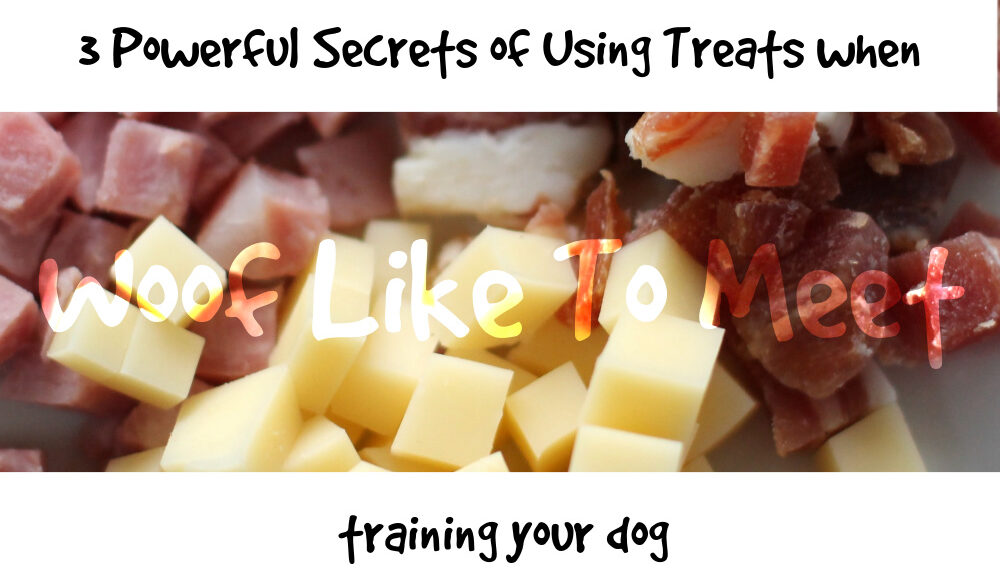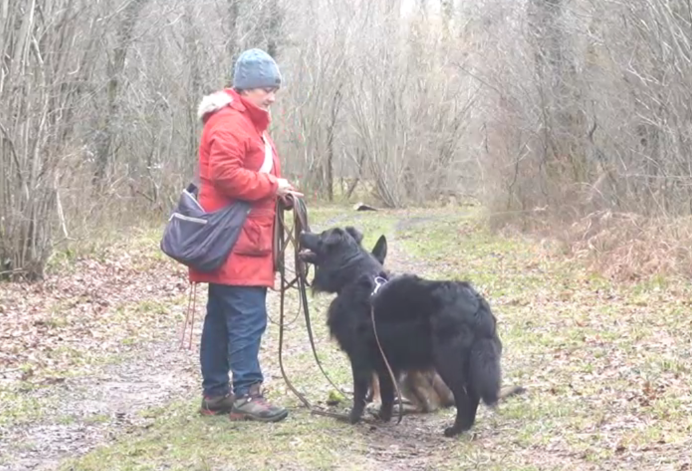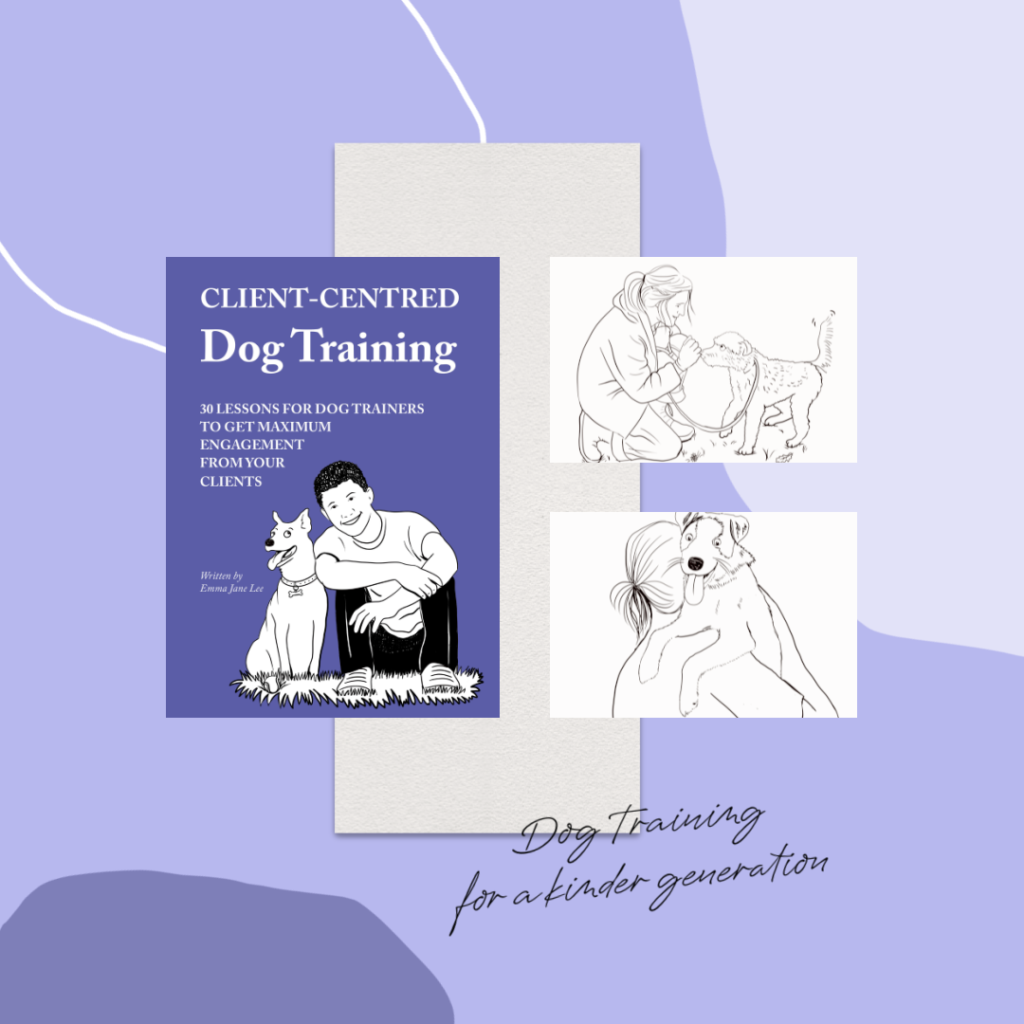Some of my clients struggle when it comes to getting their dog to focus on them outside on walks. That can make their real-world training really tough.
I just can’t tell you how helpful it is to have a dog who’ll take food when you’re trying to teach recall, loose lead or even when you’re trying to work around challenges like wildlife, livestock, cars, humans and other dogs.
The first thing to do is rule out these ten reasons why your dog might not be treat-oriented:
#1 You’ve been using low grade food – break out the good stuff!
#2 You haven’t yet trained an ‘eat anywhere, anytime’ habit
#3 Your dog is anxious, overstimulated or overwhelmed
#4 Your dog is sick or unwell
#5 They’re not at all hungry
#6 You’re asking too much and not using a gradient for distractions
#7 You don’t have a training relationship with your dog
#8 You’re using your hand as a plate when your dog is miles from you or focused on other things
#9 Your training is too hard
#10 You’ve wrecked food for your dog and they don’t trust you
Today, I want to look in more detail at number 8. Where and how we deliver the treats is absolutely crucial!
These three secrets from the world of professional dog training can really skill you up.
#1 Know WHEN to deliver from your hand*
*AND also know its drawbacks
When you deliver food from your hand, you’re asking your dog to do a lot. First, this needs them to break their focus on whatever it was they were doing, whether it’s sniffing or staring. Then it needs them to turn away from whatever it is that is invariably better than whatever you’ve got in your hand. Then it needs them to move away.
This demands a huge amount of control and inhibition.
Imagine my lovely Lidy this morning as we came around a corner to find two young cats, frozen. Lidy finds cats immensely exciting. She has attacked cats before she came to the shelter and of all the other animals, cats are the one that give her the biggest thrill.
Can you imagine if I ask her at that point to come back to me, to eat from my hand?
‘Here, Lidy… yes, I know those cats are IMMENSELY thrilling and you would very much like to jump start them into motion and chase them. Please refrain from doing THAT and come and eat this stale old ball of flour from my hand.’
1. Stop looking at them. 2. Turn around. 3. Come back to me. 4. Eat a stale biscuit.
Hmmmm.
In cases like these, using your hand as a plate while you feebly try and cue your dog is likely a lost cause.
Delivering from your hand as I’m doing here is BOSS level mastery of skills. It requires training. It requires practice. It requires focus.
Those are its downsides.
It demands a high level of cognitive control from your dog. It’s tough. It requires patience to teach. Of all the places I deliver food on walks, from my hand is the hardest.
Why would anyone ever do this?
It can be really good for avoiding things that you’ve detected and your dog has not. If your dog is not ready to distract themselves from interesting or stressful things yet, then you’ll need to provide the support.
You do this BEFORE things hit the fan. If I would 100% guarantee that my dog will not cope without me supporting them, then I will use a cue to get them to come back and then I will keep them looking at me while I survey the world on our behalf and keep the dogs busy with my hands.
The best way to get it? Find a behaviour that involves your dog targeting some part of your body and then consistently deliver from your hands. They can use their eyes to target (like ‘Watch me!’), they can use their nose (like ‘Touch!’ where they touch their nose to your hand) or they can use a body part (like ‘Lean!’ where they target their shoulder to your leg).
Start small in the kitchen or home and scale up.
Delivering from my hand has helped us avoid deer, joggers, cyclists, hedgehogs and cats. When I see something and my dogs haven’t, I step up. This also requires a couple of behaviours where food reliably comes from your hand. I cue ‘touch’ because that always means the food will be delivered from my hand, and I cue ‘watch’ which means the same. Don’t vary where the food is delivered from and pick a behaviour that your dog is enthusiastic about. Lidy loves hand touch. Heston loves spin.
Delivering from your hand is a great way of stepping up and supporting your dog if they need help distracting themselves.
This is a video I’d made as part of a series on loose-lead walking. What we need to realise is JUST how hard focusing on a human can be when there’s a lot of environmental challenge, and that eating from the human’s hand requires a high degree of control. This control *will* need scaffolding and you *will* need to build up to it.
#2 Know WHEN to go to the dog and feed from your hand
When I’m working on paired learning, I quite often feed from my hand. I don’t do much respondent counterconditioning, where we’re changing the dog’s feelings about a conditioned stimulus using food as a way to elicit an incompatible physiological, emotional and behavioural response, but I’ll quite often stick it right in with a massive great big jackpot when the dog does something I want to build on.
For instance, yesterday, Lidy was calmly watching two lambs moving and also watching their mum who was staring at us. I went to her and I fed her a huge jackpot of about 10 great treats. Today, she came back to me instead of me going to her. She’s smart. She knows who has the treats.
To have asked her to disengage, to turn around, to come back to me and do some voluntary behaviours rather than everything her instinct was telling her to do was too hard. She could eat, but the other bits were too hard. I went to her. She needed to do nothing than open her mouth and chew. That was hard enough. She kept her eye on the sheep and she didn’t change anything about her own position or posture. She just ate.
Going to the dog and feeding from your hand is a useful step in scaffolding behaviours that will eventually become voluntary disengagement and u-turns.
Too many of us, however, expect the dog to listen to our cue, to disengage, to turn around and to come to us. Much easier if you’re working on a lead or long line if you go to the dog. If your food reward is big enough, you should find that within two or three trials, your dog will disengage to eat.
This intermediate step shouldn’t take very long if you put aside your inner Grinch, pay up and pay out a jackpot. You might only need to do it once before you can then start shaping those moments when your dog naturally turns away to see why the food is late.
It can be very useful if your dog will eat but the other bits that you’re asking are just too hard.
#3 Make the food move so that the environment pays up
So many guardians aren’t making the most of their dog’s specific talent. If you’ve got a dog who visually fixes on things, make the food move visually by rolling it or throwing it so that it catches their eye and they have to visually track it.
This makes it much more fun for the dog and stops you fighting against all their inner urges. What did Lidy want to do with the cats this morning? Watch them run, catch them and grab them.
Food can do this if you make it. It moves fast, it can be caught and grabbed.
No, a bit of ham or cheese is absolutely not the same as catching a cat. But Behaviour has this helpful friend called Habit. Dogs do what has reliably been reinforced in the past. If it’s a small dose of the stuff they enjoy, so much the better.
It can also be used to break up a dog’s visual fix, keep them moving and keep the pace up.
If you’ve got a dog whose nose is to the ground and enjoys scentwork, using longer grass can give their nose a work out as well.
This is another video where the environment is reinforcing the dog, not really me. The movement of the food, finding the food, sniffing it out if necessary – those are all ways that we can make training more fun for a dog. It’s much more dynamic and fun for the dog.
Where I wouldn’t use this method is with dogs who are in an environment where they need a bit more support and direction. Of course, this can also require dogs to disengage from one target and fix on another so it’s not as easy as it looks from the dog’s brain’s perspective.
Using food from the environment also takes the pressure off dogs who are sensitive to humans or who have a fear of human hands. It’s useful for dogs who are overcoming guarding and distrust with their guardians but also for dogs we’re not familiar with.
Lidy here models one way people can use food to encourage closeness from dogs without adding the pressure of making them approach a scary human.
I very often use Suzanne Clothier’s Treat and Retreat with dogs, but with nervous or shy dogs, it means you have to throw the treat and that gesture in itself can be something they struggle with. Here, they’re encouraged to move in by two things: the food AND by the human moving away.
By the way, this is also great for recall and loose lead practice. Simple, easy and reminds the dog that being near you comes with benefits.
#4 Added bonus: use the food delivery position to test whether the dog still wants to engage
When Lidy first arrived, I had a hell of a time grooming her. She would bite the brush, grab my hand and generally do everything she could not to be groomed. I’ve worked with some malinois who are so excited by human hand movement and contact that they bite and grab straight away. Throwing the food away from you and the brush gives them a chance to reset AND if they want to come back, they will.
Throwing the food away from you and letting the environment cough up is a good way to reinforce at the end of muzzle training, mat training, platform training, training the dog to stay in their bed. I even use it to teach loose lead. When the dog has walked near to me for a planned number of paces, I mark their success with a marker word ‘good!’ and then the treat goes away from the dog. When they come back and get in position again, that shows they truly understand what it is that’s getting the treat. It also ensures that they’re consenting.
Here, you can see me do it with Lidy and her brush. You can also see me do it with Heston as we practise some loose lead walking skills. Yes, I know we have no lead. You don’t need a lead to teach loose lead skills!
Allowing the environment to pay up is an ideal way of testing whether the dog is comfortable with what you’re doing and the position you’ve asked them to take.
Ultimately, you can really make a difference to your dog’s engagement with what you’re asking them to do by considering where you will deliver the treat, and how.
PS Many people worry unduly about dogs eating anything from the floor. Heston’s treatment with phenobarbitol for his epilepsy has meant that he is a constant scavenger. Cat poo and roadkill are particular favourites.
One thing I do NOT find is that food going on the ground increases their likelihood of scavenging; In fact, rewarding from the hand when they choose to ignore a likely pavement food source is a great way to work through this.
On our walks, there is one cat who never buries his turds and who always goes at the same spot. This is quite attractive to Heston. I reward from me as we walk past this place and he deliberately chooses to disengage. This has stopped him fixating on that place and pulling to get to it each morning. A bird in the hand is worth two in the bush as they say. Or, a treat from the hand is worth two turds on the grass, perhaps.
Now, as we get to that place on our walk, he comes to heel without cuing and I feed every three paces from my hand until we’re past.
No other dog I’ve ever worked with, including a very large number of beagles, labradors and spaniels who are often life’s natural scavengers, has ever started scavenging as a result of dropped, hidden or thrown treats. If they were scavenging before, feeding from the hand can help them if they need structured support to disengage and has actually diminished their scavenging. Because of the training history and habit, they’ve been much easier to call away from things they might pick up.
It matters how and where we deliver food for our dogs. We can use those factors to our advantage if we’re sensible and improve our training success. In the home, garden, shelter, kennel or car, remote controlled treat delivery systems can also remove the need for throwing. They’re much neater too!
Before you leave, I’d like to ask two favours of you. The first is that, if you have read my book Client-Centred Dog Training, could you leave me a review? That’d be just ace. It helps people know if it’s for them or not.
The second favour is more for you than for me… if you’d like regular content, just add your email and hit ‘subscribe’!



